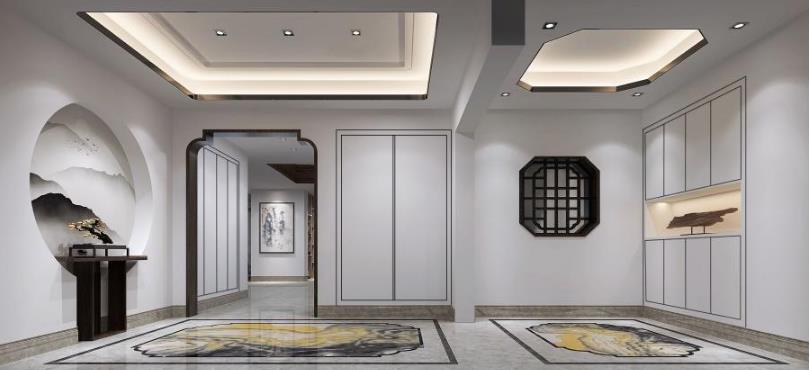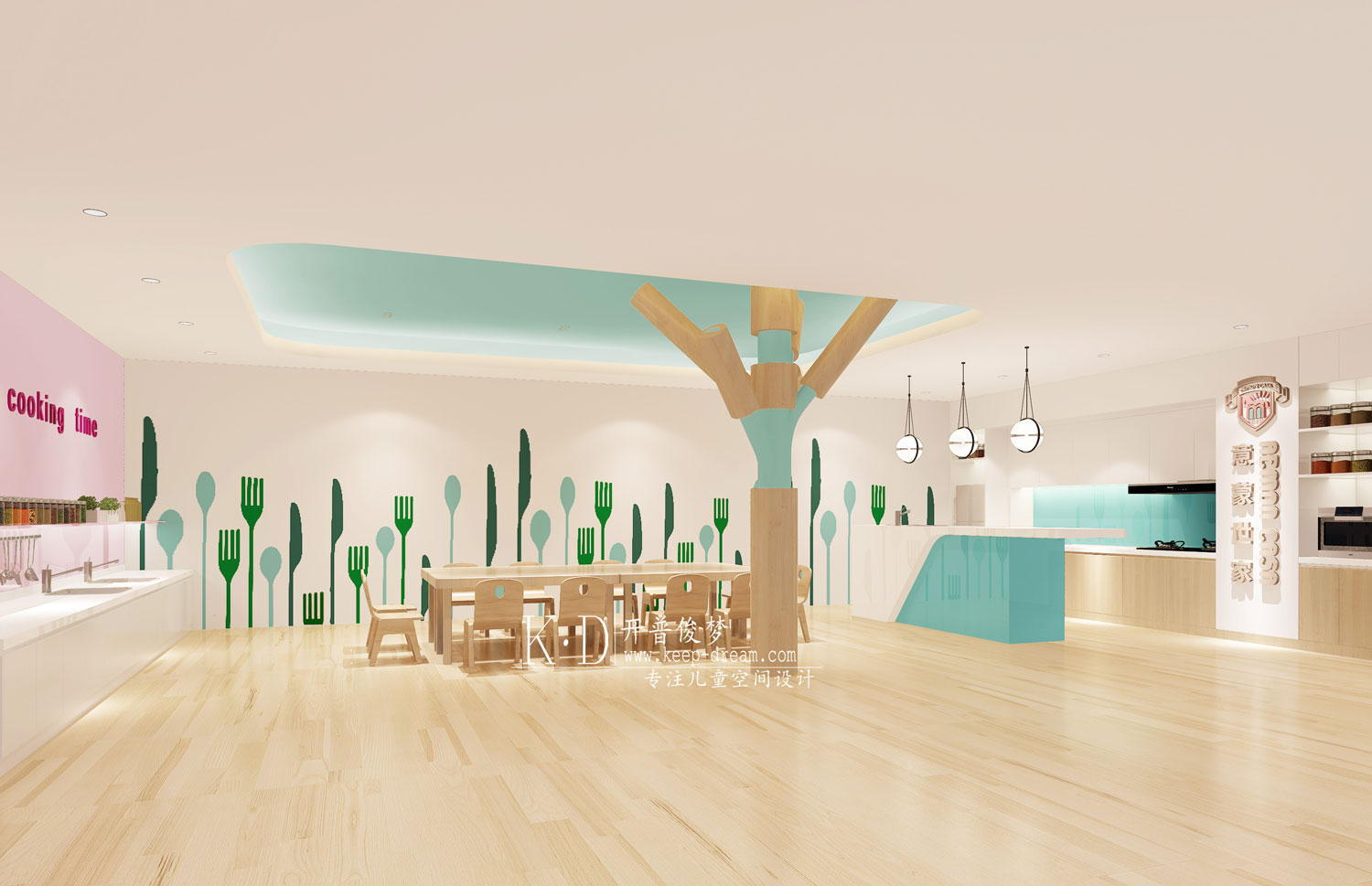Congo Kintele Congress Centre AVCIARCHITECTS
2017-07-26 00:00
架构师提供的文本描述。新的凯尔克会议中心和度假酒店(KCC)位于新的奥林匹克中心以北的布拉柴维尔的一个新开发地区。该遗址南面有刚果河的全景图,北部则是一片林立的未建景观。该遗址的地形是大刚果河开辟的一个山谷,它在前景中创造了一个岛屿M‘Bamaou,建筑物与这个山谷的轮廓平行,向河流俯冲。
Text description provided by the architects. The new Kintele Congress Centre and Resort Hotel (KCC) is in a newly developing area of Brazzaville, to the north of the new Olympic Centre. The site has panaromic views of the Congo River to the south and a forested unbuilt landscape to the north. The topography of the site is a valley carved out by the great Congo River which creates an island M’Bamaou in the foreground and the buildings sit parallel to the contours of this valley falling towards the river.
建筑物在工地上的位置在很大程度上取决于我们所关注的这一地形,以尽量减少过度挖掘和将泥土移离工地。节目的更大对象:1500个座位的国会厅、300人总统厅、1000个座位的宴会厅和1000人的公共广场被按顺序排列,被庭院打断,所有这些都由连接这些要素的公共庇护Collonade到达。另一方面,酒店位于这条普通公共长廊上方5米处,主要是为了让它更好地欣赏河流,同时对现场的功能进行公共/私人征用。除了两个院落外,所有的庭院都可供公众使用,并使我们能够在这些活动的广大群众中形成景观美化的间隙。因此,KCC的形式融入了景观,避免了规模过大的大面积建筑的出现,同时从所有酒店客房提供刚果河的景观。
The positioning of the buildings on the site is largely dictated by this topography where we were concerned to minimise excessive excavation and shifting of earth away from the site. The larger objects of the programme: the 1500 seat Congress Hall, the 300 person Presidential Hall, the 1000 seat Banquet Hall and the 1000 person Public Piazza were placed in a line sequence interrupted by courtyards, and all reached by a public sheltered collonade that links these elements. The Hotel on the other hand is positioned 5 meters above this general public promenade, largely to give it better views to the river, while making a public / private segragation of functions on the site. All but two courtyards linking the enclosed volumes are accessible to the public, and allow us to form landscaped intermissions amongst the large masses of these functions. Thus the form of the KCC settles in to the landscape, avoiding the appearance of an out of scale overbearing large mass of buildings while providing views of the Congo River from all hotel rooms.
350米长的Collonade本身也是一个线性的公共空间,为人们提供庇护,让人们免受全年大部分时间在这一地区普遍存在的雨水的影响。Collonade的两端也是通往整个建筑群的公共大门。这座公共大楼的附属设施是西门的新闻大厅和东门的博物馆。在这最后,博物馆形成了广场的南边,而商店和公共餐厅形成了广场的北部和东部边缘。这个开放的空间也是避雨的地方,有一个方形的屋檐,让雨水落在它的中央的一个浅水池里。
The 350 meter long collonade also acts as a linear public space in itself sheltering people from the ever present rain that prevails most of the year around in this part of the world. The two ends of the Collonade also act as public gates to the whole complex. Attached to this public collonade are the Press Hall to the Western gate and Museum to the Eastern gate. At this end the Museum forms the southern edge of the Piazza, while the shops and the Public Restaurant form the Northern and Eastern edges of the Piazza. This open space is also sheltered from the rain with a square occulus that allows the rain to fall in to a shallow pool at its centre.
一年中至少有6个月的时间里,雨是刚果的一种普遍存在的气候现象,它决定了人们在公共场合和公共空间中的互动方式。因此,在这个意义上,人们做出了很大的努力,让人们在户外而不是远离自然的地方避难,而雨的存在,因为下雨的时候,仍然很温暖,当然也很潮湿。因此,虽然避雨是很重要的,但让空气流动和冷却这样的遮蔽空间也是很重要的。水的存在是通过让它从屋顶上滑落,当它到达地球并充满开放的水池时,这是值得庆祝的。这些池子会从巨大的屋顶上溢出,使用漱口水和瀑布。
For at least 6 months of the year rain is an everpresent climate phenomenon in Congo and defines the way people interact in public and with public space. Therefore great effort was made in this sense to shelter people while out in the open but to not distance from nature, and the presence of rain because while it is raining it is still very warm and ofcourse humid. There fore while it is important to shelter from rain it is also important to allow air to flow and cool such sheltered spaces. The presence of water is celebrated by making its fall from roofs visible and audible as it reaches the earth and fills open pools which take overflow from large roof areas using gargoyles and water falls.
本港热带气候的另一个方面,是经常有高度湿度,利用自然通风来减低能源消耗的困难,以及使用公共空间的空调,使舒适条件达到可接受的舒适标准。我们在这种情况下的主要目标是通过减少暴露在玻璃表面上的太阳光来减少冷却负荷。因此,玻璃总是深深地镶嵌在北方的立面上(在这种情况下,它实际上是真正的北立面,由于赤道以下地点的位置而受到正午的太阳照射),从东面和西面发出的低太阳光被垂直遮阳元素和穿孔金属屏所最小化。
Another aspect of the local tropical climate is the constant presence of a high level of humidity which makes use of natural ventilation as a way of minimising energy consumption difficult and the use of airconditioning of public spaces essential for comfort conditions to be achieved to acceptable comfort standards. Our main objective in this case is to minimise the cooling loads by reducing the incidence of sunlight on exposed glass facades. Thus glazing is always deeply set in to the façade on the north (in this case it is actually the true north façade which receives the midday sun due to the location of the site below the equator) and low sunlight from the east and west is minimised by vertical shading elements and perforated metal screens.
KCC材料的使用在很大程度上取决于施工速度的要求,以及现代建筑材料和包层材料的供应,刚果共和国没有这种要求。因此,虽然这将是成本效益更高的,但混凝土框架被排除在有利于钢铁和更易于运输的轻包层材料,如铝面板,用于块体或砖块等大型覆层构件。除此之外,在任何时候都努力使用天然材料,如木材和石头。
The use of materials in the KCC were to a large extent dictated by the requirement of speed of construction, and availability of modern construction and cladding materials, of which none exist in The Congo Republic. Thus although it would be more cost effective, concrete frame was ruled out in favour of steel and more easily transportable lighter cladding materials such as aluminium panelling for massive cladding elements such as block or brick work. Beyond that efforts were made to use natural materials at all times such as timber, and stone.
较大的元素由一系列穿孔包层元件表示,这些元素是激光切割成的刚果几何图案,这些图案源自较大区域的传统,将建筑物与其所在的地方连接起来。有时,这些图案会在室内元素中被回忆起来,比如地板图案和分隔室内空间的屏风,有时还会出现在外墙上,形成内部和外部之间的阴影或隐私。垂直遮阳元素是一种浅色的青铜/黄铜饰面,背景是较大的深色面板,当然还有玻璃。这个项目的整体色彩是从一系列较浅和更深的青铜和黄铜的颜色中衍生出来的。
The larger elements are signified by a series of perforated cladding elements which are laser cut in geometric Congolese patterns derived from the traditions of the larger region, connecting the buildings to their place. At times these patterns find themselves recalled in interior elements such as floor patterns and screens which divide interior spaces, and at times on external wall elements creating shading or privacy between inside and outside. Vertical shading elements are a lighter coloured bronz/brass finish, set against a background of larger darker coloured panels and of course glass. The overall colour palatte of the project is infact derived from a series of lighter and darker shades of bronz and brass.
这座200间卧室的度假酒店也是会议中心的附属设施,为一些总统客人提供了两种设施,包括6间总统套房及其随行人员,以及一系列套房和标准客房。底层是温泉浴场、餐厅、酒吧和游泳池,它们都矗立在会议中心的上方5米处,可以俯瞰刚果山谷的全景。
The 200 bedroom resort hotel also acts as an adjunct to the Congress Centre, providing both facilities for some of the presidential guests, with 6 presidential suites and their entourage, with a series of suites and standard rooms. On the ground floor are the spa, restaurant, bars and the pool all of which stand 5 metres above the level of the Congress Centre, providing panoramic views across the Congo Valley.
行人连接从酒店游泳池一侧一直延伸到下面的主要活动庭院,它也是公共广场的延伸,公共广场再次连接到东西的Collonade。
Pedestrian links lead from the hotel pool side down to the major event courtyard below which also serves as an extension of the Public Piazza, which links again to the collonade running East West.
Architects AVCI Architects
Location Kintele, Congo (Republic of the Congo)
 举报
举报
别默默的看了,快登录帮我评论一下吧!:)
注册
登录
更多评论
相关文章
-

描边风设计中,最容易犯的8种问题分析
2018年走过了四分之一,LOGO设计趋势也清晰了LOGO设计
-

描边风设计中,最容易犯的8种问题分析
2018年走过了四分之一,LOGO设计趋势也清晰了LOGO设计
-

描边风设计中,最容易犯的8种问题分析
2018年走过了四分之一,LOGO设计趋势也清晰了LOGO设计


































































































